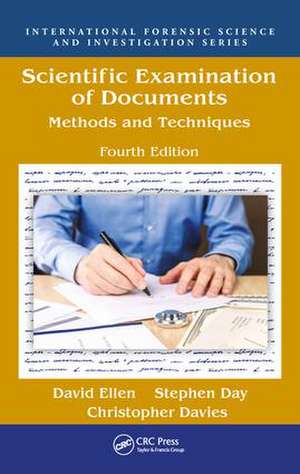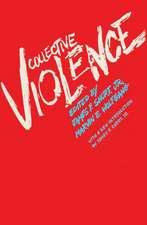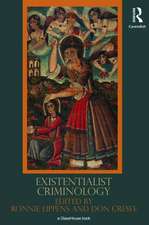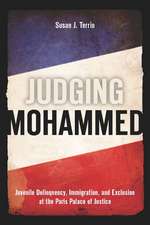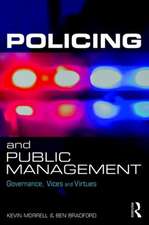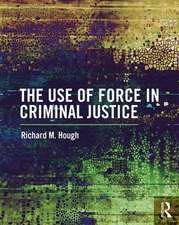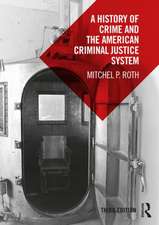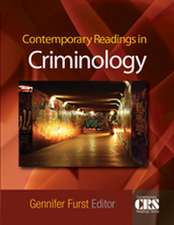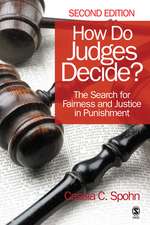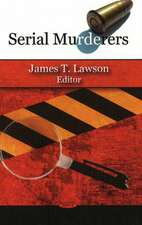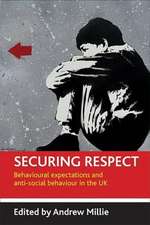Scientific Examination of Documents: Methods and Techniques, Fourth Edition
Autor David Ellen, Stephen Day, Christopher Daviesen Limba Engleză Hardback – 8 mai 2018
Since the first edition published in 1989, there have been drastic changes in the field of forensic document examination--both from the use of the analytic techniques available to the professional examiner--and the changes to technology in office and printing equipment and inks. The purpose of analyzing any material used in the production of a questioned document, such as an ink or a piece of paper, is to compare it with another material elsewhere in the questioned document itself--or on another document--to determine whether or not they share a common origin. There may also be a need to provide information for the investigator about the possible origins of the document.
This latest edition reflects the myriad changes and advances that have occurred in the last 10 to 15 years. Topics covered include: current thinking on handwriting interpretation; accidental and deliberate modification of handwriting; the proper collection of samples; a discussion of shredded documents; professional accreditation standards, qualifications, and training; and modern digital imaging and analysis of documents and handwriting utilizing software and imaging, including reconstruction of an image from erasures, obliteration and other document altering methods. A new section addresses cognitive bias and Chapter 8 is completely updated to cover the advances in print and photocopied documents, based on current technology, and analytical developments in the comparison of such documents.
Key features:
- Discusses issues regarding handwritten, photocopied, and printed documents--including inkjet versus digital printing
- Presents the advances and capabilities modern office fax, photocopy, and printing technologies--and implications for document examination
- Details and reinforces the importance of ensuring proper scientific methods during an examination
- Addresses current Raman spectroscopy, UV-VIS, mass spectroscopy, and SEM analysis techniques
- Highlights the importance, and implications, of biological and fingerprint evidence from documents that can be collected, examined, and utilized in a case
| Toate formatele și edițiile | Preț | Express |
|---|---|---|
| Paperback (1) | 568.28 lei 6-8 săpt. | |
| Taylor & Francis – 31 mar 2021 | 568.28 lei 6-8 săpt. | |
| Hardback (1) | 765.52 lei 6-8 săpt. | |
| Taylor & Francis – 8 mai 2018 | 765.52 lei 6-8 săpt. |
Preț: 765.52 lei
Preț vechi: 1028.20 lei
-26% Nou
146.50€ • 152.38$ • 120.94£
Carte tipărită la comandă
Livrare economică 14-28 aprilie
Specificații
ISBN-10: 1498768032
Pagini: 266
Ilustrații: 3 Line drawings, black and white; 27 Halftones, black and white; 30 Illustrations, black and white
Dimensiuni: 156 x 234 x 20 mm
Greutate: 0.53 kg
Ediția:4th edition
Editura: Taylor & Francis
Colecția CRC Press
Locul publicării:Oxford, United Kingdom
Public țintă
Academic and Professional Practice & DevelopmentNotă biografică
David Ellen was in the field of Forensic Science for 43 years. For 29 of these years he specialised in the forensic examination of questioned documents, mostly in the Metropolitan Police Forensic Science Laboratory, London, England, and also in the Forensic Science Centre in Adelaide, South Australia, then in private practice in London. He was secretary of the Questioned Document Section of the meeting of the International Association of Forensic Sciences in Adelaide in 1990 and has trained and inspired a generation of new Document Examiners. He is now retired.
Christopher Davies started work in the Metropolitan Police Forensic Science Laboratory in 1981 where he was trained in questioned document examination. He continued to work in London when the Metropolitan Police Laboratory became part of the Forensic Science Service in 1996. He became one of the senior document examiners responsible for dealing with serious crime, including counter-terrorism, cases. In 2010 he left the London Laboratory when the Questioned Documents Section there was closed and continues to work as an independent consultant. He is also the ISO/IEC 17025 technical assessor for questioned documents for the United Kingdom Accreditation Service.
Cuprins
Descriere
Revised and expanded to reflect the most recent innovations in the field, The Scientific Examination of Documents, Fourth Edition is a handy, accessible volume detailing current best-practices for forensic document examination.
Since the first edition published in 1989, there have been drastic changes in the field of forensic document examination--both from the use of the analytic techniques available to the professional examiner--and the changes to technology in office and printing equipment and inks. The purpose of analyzing any material used in the production of a questioned document, such as an ink or a piece of paper, is to compare it with another material elsewhere in the questioned document itself--or on another document--to determine whether or not they share a common origin. There may also be a need to provide information for the investigator about the possible origins of the document.
This latest edition reflects the myriad changes and advances that have occurred in the last 10 to 15 years. Topics covered include: current thinking on handwriting interpretation; accidental and deliberate modification of handwriting; the proper collection of samples; a discussion of shredded documents; professional accreditation standards, qualifications, and training; and modern digital imaging and analysis of documents and handwriting utilizing software and imaging, including reconstruction of an image from erasures, obliteration and other document altering methods. A new section addresses cognitive bias and Chapter 8 is completely updated to cover the advances in print and photocopied documents, based on current technology, and analytical developments in the comparison of such documents.
Key features:
- Discusses issues regarding handwritten, photocopied, and printed documents--including inkjet versus digital printing
- Presents the advances and capabilities modern office fax, photocopy, and printing technologies--and implications for document examination
- Details and reinforces the importance of ensuring proper scientific methods during an examination
- Addresses current Raman spectroscopy, UV-VIS, mass spectroscopy, and SEM analysis techniques
- Highlights the importance, and implications, of biological and fingerprint evidence from documents that can be collected, examined, and utilized in a case
The Scientific Examination of Documents, Fourth Edition serves as an invaluable resource to established professionals, those just entering the field, and legal and investigative professionals outside the discipline who have a professional interest dealing with questioned documents in the course of their work.
